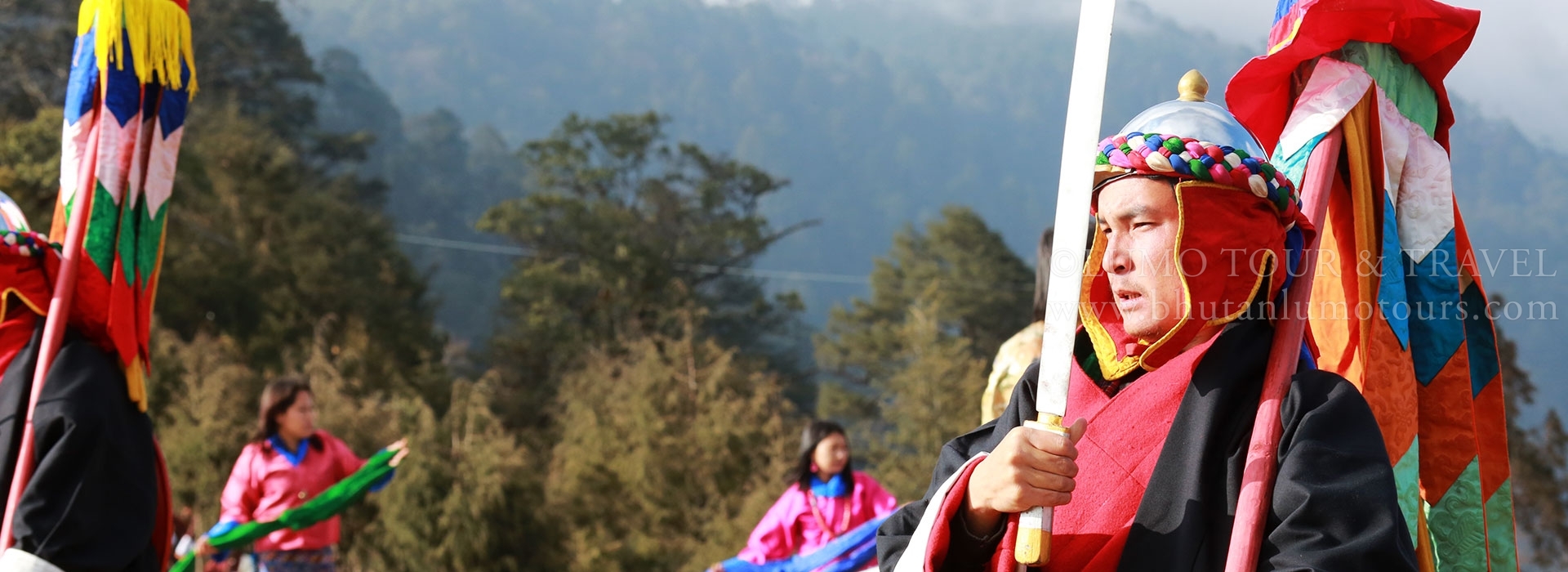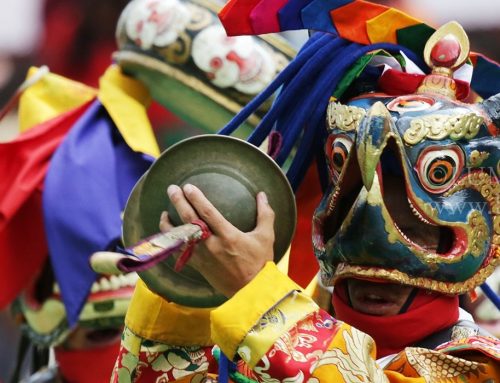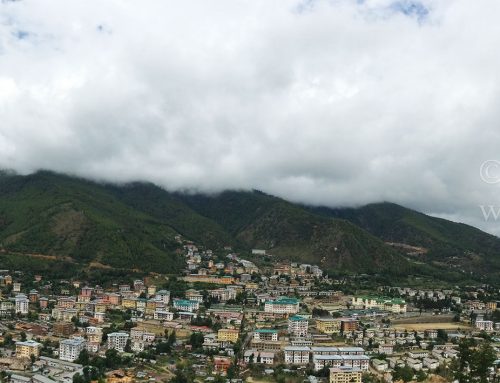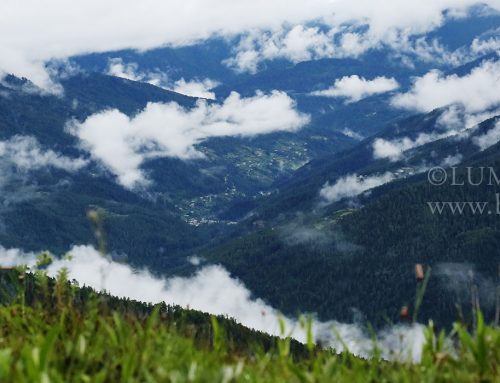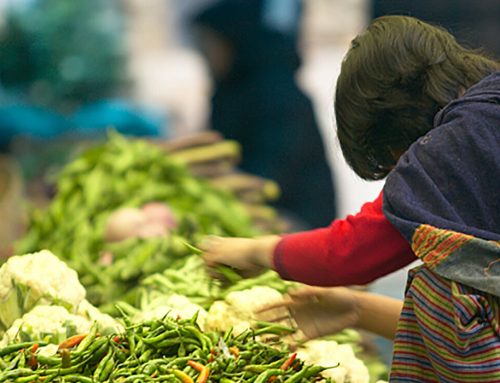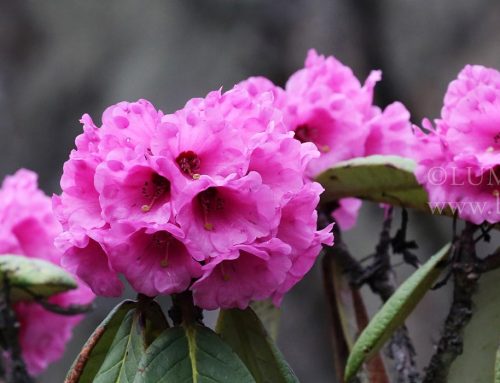Ancient stone implements and other archaeological findings indicate that there were settlements in the country dating back to 2000 B.C. The chronicled history of the kingdom, however, begins with the advent of Buddhism in the 8th century.
In 747 A.D. the Buddhist saint, Padmasambhava, popularly revered in Bhutan as Guru Rinpoche or the Precious Master, visited the country and introduced Buddhism. In the 17th century, Zhabdrung Ngawang Namgyal (1594-1652), a leader of the Drukpa Kargyu school of Buddhism, consolidated the country and established the Chhoesi or dual system of government, whereby both the temporal and religious authority were separated and vested in the Druk Desi and Je Khenpo respectively. By the end of the 17th century, the country emerged with a distinct national and cultural identity as well as an unprecedented degree of political stability.
By the second half of the 18th century, the country witnessed a resurgence of political instability. The external threats in the latter half of the 19th century added a new dimension to the political quandary. It was against this background that the need for strong national leadership emerged. Peace and stability was restored with the enthronement of His Majesty King Ugyen Wangchuck as the first hereditary monarch of the kingdom in 1907.
The establishment of the monarchy ushered in a new era of peace and stability and most significantly unified the country under a central authority. It also set in motion a steady process of engagement with the outside world and laid the foundations for the country as a modern nation state.
The third King, His Majesty Jigme Dorji Wangchuck (1952-1972), instituted far-reaching political, social and economic reforms. He instituted the National Assembly, the High Court, and the Royal Advisory Council. He started the planned development process in 1961. He also guided Bhutan to membership in the UN in 1971.
Since his coronation in 1974, His Majesty Jigme Singye Wangchuck, the fourth King, has dedicated himself to defining and realizing a long-term vision and direction for the country. He promoted an approach of development known as Gross National Happiness (GNH) which calls for careful balance between creation of material wealth and the spiritual, cultural and social needs of the society. He also pursued a process of democratization and involvement of the people in their own affairs from the national to the community level.
On 14 December 2006, His Majesty Jigme Singye Wangchuck voluntarily abdicated the throne and handed over the responsibilities of the Monarch and the Head of State to the Crown Prince His Royal Highness Jigme Khesar Namgyel Wangchuck who has since assumed responsibilities as the Fifth King of Bhutan.
His Majesty the King Jigme Khesar Namgyel Wangchuck was adorned with the Raven Crown at an ornate coronation ceremony in Thimphu on 6 November 2008, becoming the world’s youngest reigning monarch and head of the newest democracy.
Don’t be surprised if you come across a person who says “What can I do for you?” And “would you like to have something?” or “You can stay at my place tonight”.
These are some of the important gestures most Bhutanese usually show to strangers. The offers are genuine.
The Bhutanese are helpful and hospitable. They believe these are some social values that keep the social harmony intact and society together.
Family bond, friendship, love and respect relationship among elders and the young are human values that most Bhutanese are proud of to practice.
The people by nature are open, friendly and take crude jokes as humor. They are karmic conscious and firmly believe being good to living beings is a license to happy life, both in the present and next life.
Of the total population of about 0.7 million more than 75% live in the rural areas. Agriculture is the source of their livelihood. People in the west and south grow a plenty of paddy and is their staple. And those in the east and central regions live off maize, wheat, buckwheat, and barely.
Bhutan’s population consists of three major ethic groups. They are Ngalong, Sharchop and Nepalese.
Ngalongs live in the western region, Sharchops in the east and Nepalese in the south.
Ngalongs are considered to be the origins of Mongoloid and Tibetans. Sharchops are supposed to be the earliest inhabitants of Bhutan. But their origins are still not known. And the Nepalese are the economic immigrants who settled in the country in the early 19th century.
The national language is Dzongkha. It is the mother tongue of the people living in the western region. But most Bhutanese can speak it.
Bhutan experiences four different seasons. Most tourist visit Bhutan in spring and autumn.
Spring is the time when Bhutan’s rich flora gets at it best as many and various flowers blossom. And during this time around the skies are clear and you can see towering snow-covered mountains of the Himalayas. Tourists say spring is the best season to visit Bhutan.
Even in spring Bhutan’s fierce winter, especially in high altitude would be over. Tourists who intend to visit during this time are advised to be equipped with some winter clothes.
Spring season starts from March and ends roughly in June. And another good time of the year – autumn – begins from September and lasts till the end of November.
However, Bhutan’s climatic conditions are different at different places and locations. It is because the country’s geography is mixed of mountains, plains, valleys, and hills.
Some places in Bhutan are as low as 100m and as high as more than 7,000m above the sea level.
Winters in Bhutan are cold and dry with most high lying places snow-covered. And summers are humid and experience heavy rains and frequent road blocks.
Bhutan has three different climatic zones: subtropical in the south, temperate in the central region, and alpine in the north.
People of Bhutan consider the natural environment as a home to gods and goddesses. The belief explains the commitment of the country to protect its environment.
The Constitution mandates that at least 60% of the total area of the country to be under forest cover in all times to come.
Moreover, Bhutan’s development philosophy of Gross National Happiness recognizes the conservation of environment as one of its important pillars.
Whatever development activities the country carries out, the importance of its environment is at the heart of its development decisions. Most times, though a poor economy, the economic opportunities are forgone to protect the environment.
Today at least 72% of Bhutan’s total land area is under forest cover. And more than 50% of the total forest has been declared as the protected biodiversity corridors.
Bhutan is preserving its environment at a huge economic cost. As more than 72% of its population reside in rural areas depending on subsistence farming, they earn their livelihood from as meager as 6% of the total arable land.
The country’s economy is largely aid-fed. However, if it thinks certain modalities of assistance are going to cause damage to the environment, the country willfully declines it.
The protection and conservation of environment has been one of the significant national goals since the start of the modern development in the 1960s.
Bhutanese arts and crafts stand a pulsating testimony to the country’s rich cultural heritage. Apart from its roots in the intrinsic religious significance, it possesses a boundless creativity in its style.
From the majestic fortresses (Dzongs) to people’s homes, the country’s unique arts and crafts embody the common national consciousness. Its simplicity, use of rich natural colors, and the religious thematic undertones create a poignant expression of the human will to achieve perfection. Although the style resembles that of Tibet, the country’s artisans have however departed from the dictates of easy influence to more experimental self-creativity. Thus, the themes and forms remain uniquely Bhutanese, heavily influenced by the country’s culture and religion.
Bhutan’s thirteen traditional arts and crafts (Zorig Chusum) is a legacy from the 17th century masters. They include: Woodwork (Shing Zo), Stonework (Dho Zo), Carving (Par Zo), Painting (Lha Zo), Sculpting (Jim Zo), Casting (Lug Zo), Wood Turning (Shag Zo), Blacksmithy (Gar Zo), Ornament Making (Troe Ko), Bamboo Work (Tsha Zo), Paper Making (De Zo), Tailoring and Embroidery (Tshem Zo), and Weaving (Thag Zo).
Majority of the Bhutanese are Buddhists. There are people who follow other faiths like Hinduism and Christianity. Hinduism is followed by the minority ethnic group called Nepalese and Christianity by a few Bhutanese. And Buddhism is the state religion.
Bhutan is today known as one of the bastions of Tantric Vajrayana form of Mahayana Buddhism.
The ways of life and living of most Bhutanese are woven around the principles and tenets of Buddhism. That is why the two major sects of Buddhism – Drukpa Kayugpa and Ningmapa are state-sponsored.
Making it a secular state, the Constitution of the country grants a freedom to the people to choose their religious faith. However, the supreme law prohibits proselytizing.
In Bhutan religion is considered above politics. The religious figures do not participate in politics. They do not vote and are not allowed to field themselves as political candidates for elections. And religious personalities are restricted from having any political association.
This shows how much the religions are respected in Bhutan. However, there have been debates among some quarters of Bhutanese intelligentsia on if the religious community can be made immune to the impacts of political decisions.
The monastic institutions are spread all over the country. Most of the religious institutions are funded by the state and some function with the donations and contributions people make.
The centers of the 20 districts house both the district administrative machinery and the state monastic institution. This symbolizes a peaceful coexistence between religious values and modern governance principles.
The sight of an alter in every Bhutanese home, aesthetic architecture of several temples and monasteries, hills adorned with prayer flags, and chanting monks show how religious Bhutan is as a Buddhist community.
People of Bhutan consider the natural environment as a home to gods and goddesses. The belief explains the commitment of the country to protect its environment.
The Constitution mandates that at least 60% of the total area of the country to be under forest cover in all times to come.
Moreover, Bhutan’s development philosophy of Gross National Happiness recognizes the conservation of environment as one of its important pillars.
Whatever development activities the country carries out, the importance of its environment is at the heart of its development decisions. Most times, though a poor economy, the economic opportunities are forgone to protect the environment.
Today at least 72% of Bhutan’s total land area is under forest cover. And more than 50% of the total forest has been declared as the protected biodiversity corridors.
Bhutan is preserving its environment at a huge economic cost. As more than 72% of its population reside in rural areas depending on subsistence farming, they earn their livelihood from as meager as 6% of the total arable land.
The country’s economy is largely aid-fed. However, if it thinks certain modalities of assistance are going to cause damage to the environment, the country willfully declines it.
The protection and conservation of environment has been one of the significant national goals since the start of the modern development in the 1960s.


